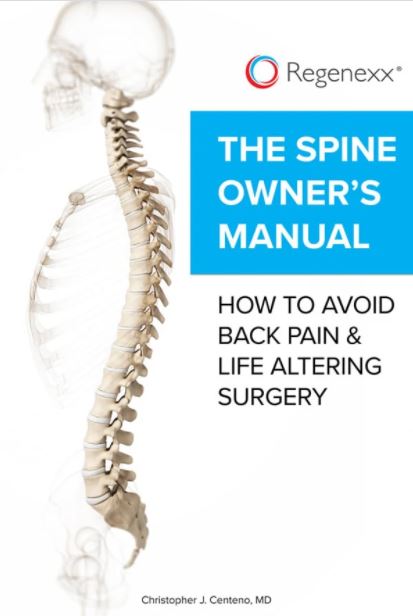“Cracking” the back is a safe and effective way to stretch the joints of the spine. This exercise also relieves pain and discomfort in the joints. You’ve probably done it just after waking up or at the end of a long day without really thinking about it.
The Benefits Of Cracking Your Lower Back
There are many benefits of cracking your lower back.
First, you need to understand what cracking your lower back is all about.
The joints contain pockets of gas which come from the synovial fluid lubricating the joint. The gases are visible on an MRI. When you crack the joint, these gases are released – that’s why you hear a crack or a pop.
Cracking your joints can release trapped gases in the joint.
Another benefit of cracking the back is that it eases pressure on the joints by stretching the surrounding ligaments and tendons.
Cracking the back is generally harmless. There are many myths that doing so can stunt growth and cause arthritis. There’s no evidence to suggest that any of this occurs due to back cracking exercises. However, as you get older, you may find it difficult to “crack” your back. In fact, doing so may even be painful. If it worsens your lower back pain, you may need medical help.
So how to crack the lower back by yourself? We list nine safe ways to do so.
1. Seated Techniques
The first method of cracking the lower back is using a seated technique. This is a great initial way of lower back cracking for someone who is new or is unsure about the process.
Seated techniques are also safer. The spine does not experience too much pressure from gravity while seated. You can do this either seated on a chair or seated on the ground.
Using A Chair
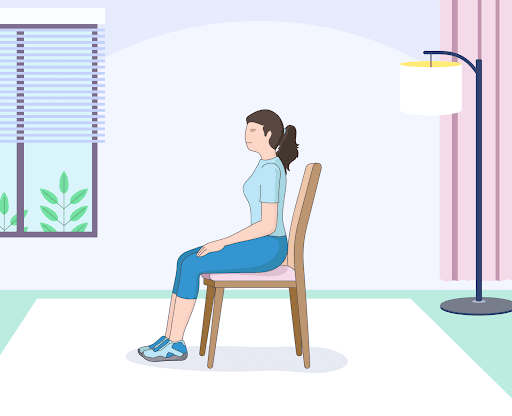
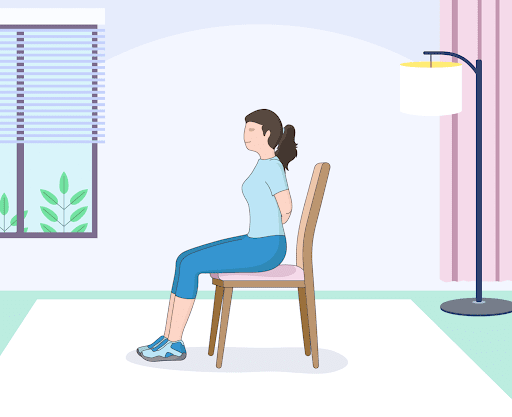
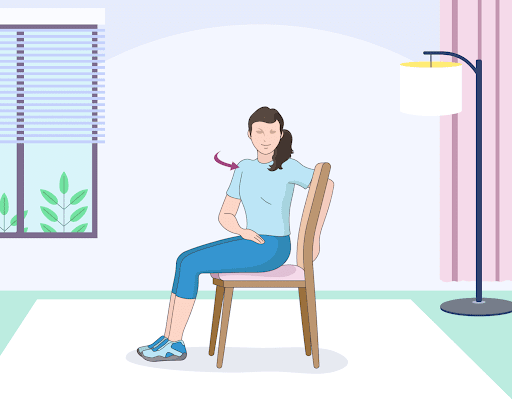
Here are the steps to crack your lower back while seated on a chair:
- Sit on a chair (preferably one without any armrests).
- Bring your hands behind you and interlock them.
- Position your hands over the painful area.
- Press your hands into the back.
- Alternatively, you can twist in the chair, grab the back of the seat.
- Hold the stretch until you find relief.
- Return to the starting position.
- Repeat on the other side.
On The Ground

Here are the steps to crack your lower back while seated on the ground:
- Sit on the floor with both legs extended.
- Bend up one knee and keep the foot flat on the ground.
- Rotate your torso in the direction of the bent knee.
- Use your hands for more rotation if needed.
- Try to look over your shoulder to deepen the stretch.
- Return to the starting position.
- Repeat on the other side.
2. Bridge Stretch
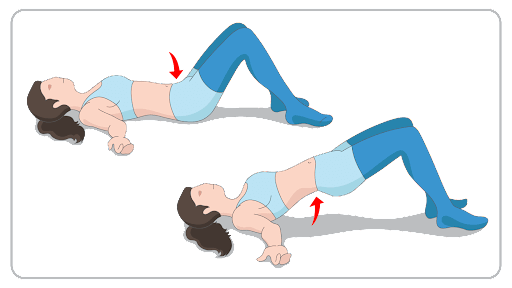
The bridge stretch is a good exercise that can help you crack the lower back by yourself.
Here are the steps of the bridge stretch:
- Lie down on the floor.
- Stretch your arms sideways.
- Slide your feet so they are close to your pelvis.
- Raise your pelvis from the ground so your shoulders and knees form a straight line.
- Hold this stretch for a few seconds.
- Repeat 2-3 times.
3. Kneeling Back Extensions
Kneeling back extensions are a great way to crack the lower back, provided you have no neck problems and can kneel without difficulty. You can do this with or without a ball (the ball is great for beginners).
Here are the steps for the kneeling back extension exercise without a ball:
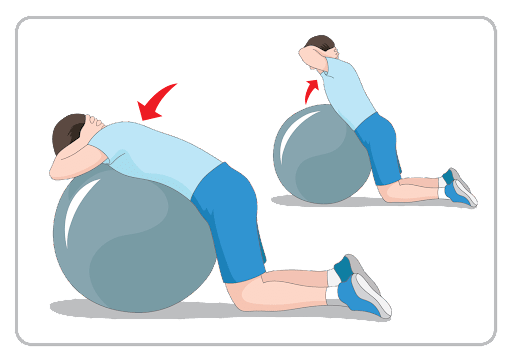
- Start by kneeling on the floor.
- Interlock your hands behind the nape of your neck.
- Bend forward at the hips. This movement extends the spinal muscles of the back.
- If you are using a ball, then you can place it in front of you and bend at the hips over the ball.
- Hold this stretch for 10 seconds.
- Return to the starting position.
- Try to complete the exercise without a ball.
Other Back Extension Exercises
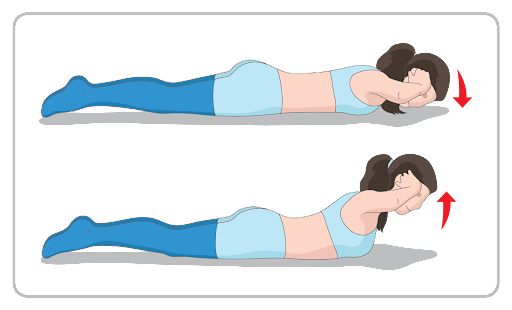
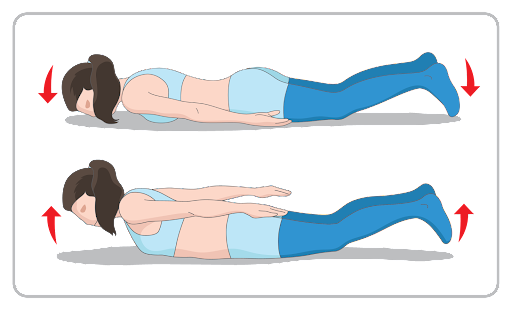
There are several other back extension exercises for people who cannot kneel.
Here are the steps for them:
Prone Extension With Elbows Bent
- Lie down on the floor in a prone position.
- Interlock your hands behind the nape of your neck or hold your hands just behind the ears (make sure you aren’t straining or pushing your neck).
- Raise your head and shoulders from the ground.
- Hold for 10 seconds.
- Return to the starting position.
Prone Extension With Arms Straight
- Another variation is to extend your arms behind you, keeping them parallel to the body.
- Raise both the arms and legs from the ground.
- Hold for 10 seconds.
- Return to the starting position.
4. Spinal Twist
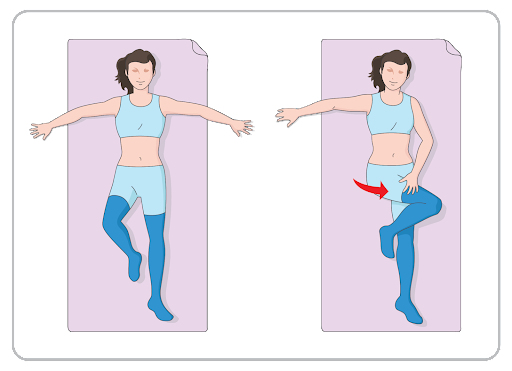
The spinal twist exercise can crack the lower back and relieve back discomfort.
Here are the steps for the spinal twist exercise:
- Lie down on your back on the floor.
- Spread your arms out away from you.
- Bend one leg at the knee.
- Rotate your knee to the opposite side of your body.
- Try to touch your thigh with the hand of the opposite side.
- Return to the starting position.
- Repeat on the opposite side.
5. Knee-To-Chest Stretch
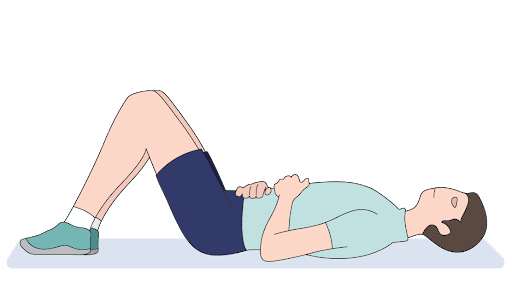
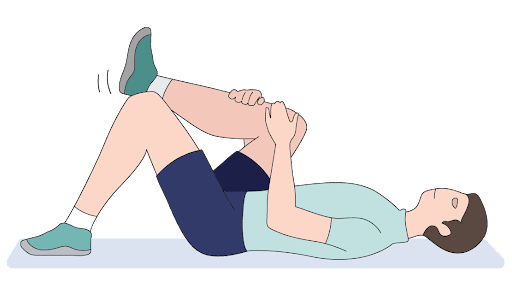
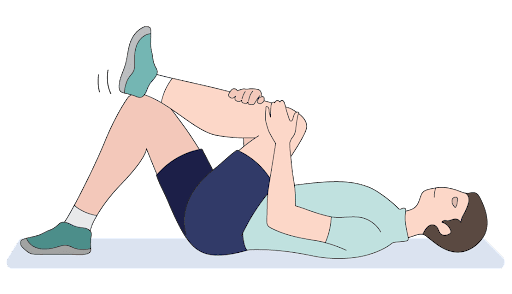
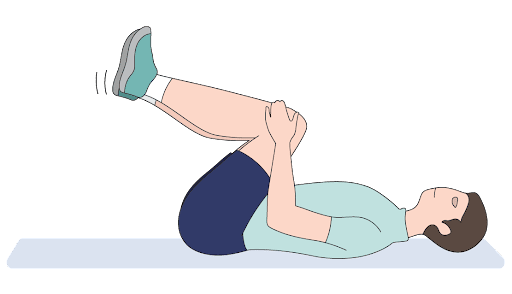
A knee-to-chest stretch is a great exercise for stretching the muscles in the back. There are many versions of this exercise like the single knee-to-chest, double knee to chest and partial sit-up knee to chest stretch. They all vary in intensity.
Beginners can start with the single knee-to-chest stretch and gradually as they get more comfortable can do the double knee-to-chest stretch. If you find doing this stretch with your arms very difficult, then you can do the partial sit-up stretch in which you can do the single knee-to-chest stretch without using your hands.
Here are the steps to crack your back with a knee to chest stretch:
Single Knee-To-Chest Stretch
- Lie down in supine on the floor.
- Raise your knee and bring it up to your chest.
- You can interlock your hands around the knee, thigh, or shin.
- Hold this position for 10 seconds.
- Return to the starting position.
- Repeat with the opposite knee.
Double Knee-To-Chest Stretch
- You can also do a double knee-to-chest stretch by bringing both knees to the chest simultaneously.
- Wrap your hands around both knees.
- Hold for 10 seconds.
- Return to the starting position.
6. Forward Flexion Stretch
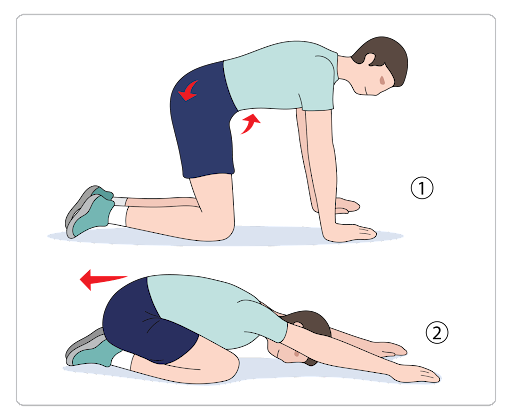
Many back flexion exercises can crack the lower back and reduce pain like the William Flexion, lunges and seated trunk flexion exercises.
Here are the steps of the forward flexion stretch (also known as Child’s pose):
- Kneel on the floor keeping the toes untucked and the tops of the feet resting on the ground.
- Send your hips towards your feet while stretching your hands forward along the ground. Keep your face facing downwards.
- Hold the stretch for 10 seconds.
- Return to the starting position.
If you cannot kneel, then sit on the floor with your legs stretched out in front of you.
For this version:
- Try to touch your toes with your fingers.
- Hold for 10 seconds.
- Return to the starting position.
7. Foam Rolling
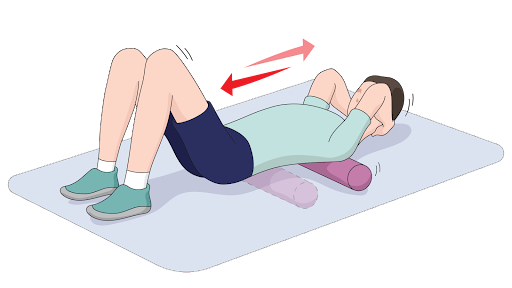
You can crack your lower back with the help of a foam roller. This is a cylindrical tube of foam used to massage the back. In addition to helping to crack your back, foam rollers can also give your sore muscles a massage.
Here are the steps for using a foam roller:
- Lie down on the floor with the foam roller underneath your shoulders.
- Position the foam roller under your shoulders so it is perpendicular to your frame.
- Bend your knees.
- Interlock your hands behind your head.
- Lift your back, so that your back rolls over the foam.
- As the foam rolls down to the lower back, lean to one side.
- With the help of your feet, move the back along the foam roller.
- Try to continue this for a few moments.
- Repeat as needed.
It’s important to keep in mind that the first time you use a foam roller, your muscles will be sore. However, with continual use 2-3 times a week, foam rolling can help relieve your back pain and reduce any lingering soreness.
8. Cat-Camel Stretch
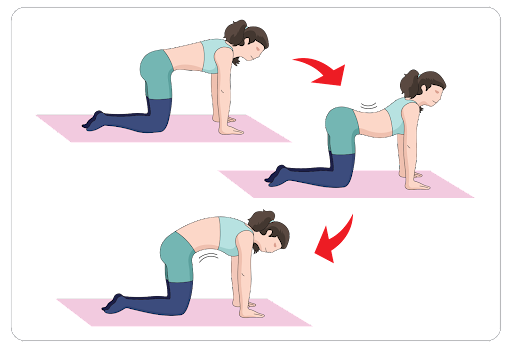
The cat-camel stretch can be used to crack the lower back. This is exactly as the name suggests. The stretch alternates between imitating a cat, then a camel.
Here are the steps for this stretch:
- Start on your hands and knees on the floor.
- Keep your wrists positioned under your shoulders.
For The Cat Pose
- Curve your back towards the floor whilst lifting your head upwards so you can see the ceiling.
- Hold this stretch for five seconds.
For The Camel Pose
- Next, drop your head and curve the spine like a camel hump.
- Hold this stretch for five seconds.
- Return to the original position.
- You can alternate between these positions about 10 times.
9. Choose Chiropractic Treatment
If you find that stretching or exercises aren’t doing it for you, you can also choose chiropractic treatment. A chiropractor can do a chiropractic adjustment or chiropractic manipulation.
While this may sound scary, an adjustment is nothing to be afraid of. All it involves is a tilt or some pressure along certain parts of your back. A trained and experienced chiropractor can tell you how many adjustments you will need for your lower back symptoms.
After the chiropractor does these adjustments, you will likely hear an audible crack. It can relieve any symptoms almost immediately.
But caution should be used with high velocity, low amplitude adjustments in the cervical spine. Would recommend more gentle techniques to avoid possible ligamentous injuries to your cervical spine.
How Often To Crack The Back?
There’s no rule about the frequency of cracking the back.You can crack your back with exercises every few days or even just once a day. However, if you find that you need to do this multiple times a day, then it’s time to seek medical help. It’s important to find out what this is before continuing with any exercises.
Those who work with a chiropractor may require weekly or monthly adjustments. The frequency of the adjustment depends on your condition and the pain relief you experience.
When Not to Crack Your Back
While cracking your back is a great way to ease discomfort, it is not always the best treatment.
Here are some indications when you should NOT crack your back:
- Swelling or redness along the back
- Acute, persistent, or severe (10/10) pain
- Fever or chills
- Vertebral injuries
- Slipped discs
- Cancer of the spine
- Moderate to severe osteoporosis
- If you are at a high risk of stroke
- During the third trimester of pregnancy
- If you have any numbness, tingling, or weakness in the legs
Tips On How To Crack Your Own Back Safely
Cracking the back can relieve your back pain. However, it can also worsen certain back injuries if it is not done correctly.
Here are some tips on how to crack the lower back without hurting yourself:
- Try doing the exercises initially with a physiotherapist. The supervision will help you correct your form and technique so that you don’t injure yourself.
- Exercise with the right posture, maintaining the natural curvature of the spine.
- Do the stretch slowly.
- Don’t exert too much pressure by overstretching beyond your comfort level. When it comes to cracking the back, more is not better.
- Hold the stretch for only a few seconds.
- The rule is to start low and go slow. Hold your stretches for up to five seconds and gradually increase it to 10 seconds as you get more comfortable.
- Return your body to the starting position and wait before doing the opposite side.
- It’s not necessary to hear a sound. If you do not hear a sound during the crack, rest assured that the stretch has still likely cracked the back.
- Know when to stop.
- If you find that cracking your back is not relieving the pain like it used to, then it may be time for medical intervention.
Living With Lower Back Pain
How Chad G. found relief for his lower back pain
Living with lower back pain can be challenging. Cracking the back can be one way to relieve back discomfort and pain. Try one of the above methods and see if it helps you. If not, maybe it’s time to see your doctor about other alternatives.
Are you experiencing lower back pain? Consult with us today!
